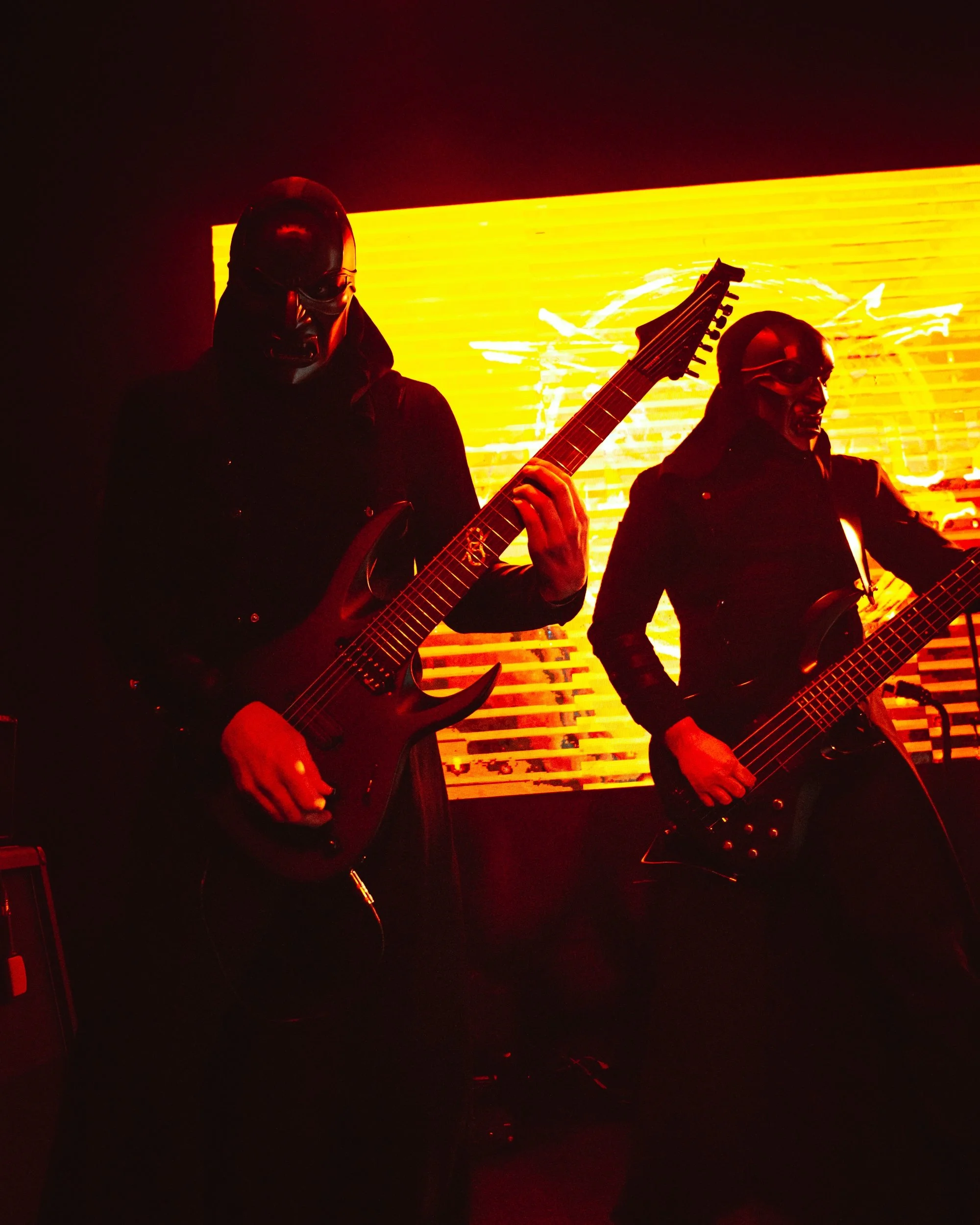The Artist of the week: Velzevul (Russia)










This week, our spotlight is on Velzevul, a Far Eastern symphonic black metal project from Russia whose music carries an intensity and darkness rarely encountered even within the genre. Velzevul is not a band that simply performs; they construct entire sonic worlds, landscapes of despair and reflection that feel simultaneously ancient and immediate. Emerging from the desolate shores of the Japanese Sea, the project channels every trace of primordial fear and ancient evil into compositions that resemble a nuclear wasteland, streets littered with debris, broken glass, and overgrown with impassable thorny walls. It is music that envelops the listener in the ashes of human history, in the silence of cities whose breath has long since stopped, and in the cold reflections of what remains when civilizations collapse under their own hubris.
The band’s lineup is concise but formidable:
Max K – vocals. His voice oscillates between feral shrieks, whispers of haunted memory, and chilling narrative intonations, creating a vocal presence that is simultaneously human and otherworldly. Max is the emotional core of the project, his performance a conduit for the album’s apocalyptic vision.
Pavel Y – guitar. Responsible for the intricate riffs and symphonic textures, Pavel constructs soundscapes that are both aggressive and expansive, blending the chaos of black metal with cinematic layering that evokes desolate urban ruins and frozen landscapes.
Aleksei L – guitar. Aleksei provides depth and melodic counterpoints, integrating orchestral layers that give each composition an almost architectural complexity. His work transforms the guitar into a narrative instrument, capable of conveying both despair and majesty.
Den K – bass. Den grounds the compositions with weight and foreboding presence. The bass lines act as a subterranean pulse, a reminder of the gravity and inevitability of decay, anchoring the listener in Velzevul’s world even as the guitars and orchestral elements soar above.
Their debut full-length, Pandemonium, co-released by Satanath Records and More Hate Productions on September 2nd, 2025, is an immersive statement of intent. Across seven tracks, the album takes the listener on a meticulous journey through a post-apocalyptic urban landscape. From the first crushing strikes of Nuclear Snow to the echoing finale of The Valley of Shadows, the music creates a sense of narrative movement, as if guiding the listener through streets littered with debris, buildings frozen mid-collapse, and skies choked with gray ash. Over two dozen polar winters, the silent, ash-covered cityscape becomes almost sentient, dissolving even the brightest colors of nature, leaving the listener alone with their thoughts, stripped of distraction, immersed in the cosmic ether of a world that has passed.
Musically, Pandemonium demonstrates Velzevul’s mastery of balance between harsh black metal aggression and symphonic sophistication. The orchestration is not superficial; choirs, cinematic synths, and layered guitar lines are integrated into the core of each composition. Tension is carefully built, allowed to rise and recede, giving moments of reflection amidst the chaos. The pacing is deliberate, avoiding the traps of relentless speed or gratuitous technicality, instead allowing each riff, vocal inflection, and orchestral sweep to fully resonate. The result is an experience that is both emotionally taxing and profoundly beautiful, a journey through despair that demands full attention and rewards patience.
Let’s do a brief Track-by-track analysis of Pandemonium:
1. Nuclear Snow – The album opens with a blizzard of tremolo-picked riffs and icy synths that immediately establish the apocalyptic tone. Max K’s vocals cut through like shards of frozen wind, alternating between visceral screams and whispered lamentations. The orchestration swells underneath the guitars, creating the sensation of walking through streets covered in gray ash, abandoned buildings looming overhead, their silence heavy with unspoken history. The pacing is deliberate, allowing tension to build slowly before collapsing into moments of crushing aggression, a microcosm of Velzevul’s approach: meticulous, layered, immersive.
2. Ashen Streets – A slower, brooding composition, Ashen Streets serves as a moment of reflection after the initial onslaught. The guitars alternate between melodic lines and dissonant chords, creating a dialogue between beauty and despair. Orchestral choirs accentuate the desolation, evoking the memory of a city that once thrived but now exists only in echoes. The bass underpins the song with a deep, almost subterranean pulse, reinforcing the sense of emptiness and gravity. It is in this track that Velzevul’s narrative vision becomes most apparent: music as architecture, as landscape, as storytelling.
3. Crystallization of Desecration – Undoubtedly the centerpiece of the album. The track unfolds like a ritual frozen in time, balancing raw black metal ferocity with symphonic elegance. The guitars intertwine, Aleksei providing counterpoint to Pavel’s aggressive riffs, while synths and choirs elevate the chaos into grandeur. Max K’s vocals shift between pained wails and icy narrative lines, conveying both destruction and reverence. The structure is dynamic: tension accumulates, then releases, leaving space for reflection. Every note feels deliberate, every orchestral swell meaningful. This song crystallizes Velzevul’s philosophy: confronting chaos, transforming decay into beauty, and exploring the dark majesty of existence.
4. Twilight of the Megalopolis – A mid-album exploration of scale and solitude. The guitars create the sensation of moving through wide, empty avenues, while orchestral textures mimic the echo of structures long abandoned. The pacing is slower here, allowing synth layers to create an almost cinematic atmosphere. Max K’s vocals convey both loneliness and foreboding, reinforcing the listener’s immersion in this frozen world. Percussion is used sparingly but effectively, emphasizing key moments of collapse or revelation.
5. Polar Winter Reverie – The most introspective track on the album. Strings and synths dominate the opening passages, creating a frozen, almost sacred atmosphere. When the guitars enter, they do so with precision, building slowly to moments of black metal intensity. The interplay between melody and dissonance mirrors the mental state of the listener navigating a world both beautiful and annihilated. The bass provides a deep anchor, and the overall effect is a meditation on isolation, resilience, and the passage of time under relentless harshness.
6. Ruins and Echoes – A return to aggression, this track combines the fury of black metal with cinematic orchestration. Fast tremolo riffs, pounding drums, and haunting choirs create layers that feel simultaneously overwhelming and meticulously crafted. Max K’s vocals are at their most visceral here, echoing the cries of the city itself. The track exemplifies Velzevul’s ability to balance raw intensity with structured complexity: chaos rendered as an art form, aggression framed as narrative.
7. The Valley of Shadows – The album closes with an expansive, immersive finale. Orchestral passages dominate the introduction, creating a sense of finality and reflection. The guitars enter gradually, building toward a crescendo that encapsulates the themes of the entire album: decay, isolation, and frozen grandeur. The vocal performance shifts between lamentation and transcendence, guiding the listener through the final streets of the destroyed cityscape. By the track’s conclusion, the listener is left in a state of contemplation, fully immersed in the frozen majesty of Velzevul’s world.
Across Pandemonium, Velzevul demonstrates a mastery of pacing, texture, and emotional depth. Each track contributes to a larger narrative, forming a cohesive exploration of desolation, human ambition, and the haunting beauty of ruin. The symphonic elements are fully integrated into the compositions, enhancing rather than distracting from the black metal foundation. The result is a deeply immersive, cinematic experience that rewards attentive listening and repeated exploration.
Among the tracks, Crystallization of Desecration emerges as the centerpiece of the album and the perfect introduction to Velzevul’s ethos. The song unfolds like a ritual frozen in time, translating decay into crystallized musical architecture. Symphonic elements are interwoven with raw black metal intensity, creating passages of haunting melody that coexist with moments of feral aggression. The track’s structure is dynamic, allowing tension to accumulate and dissipate, making the listener feel the weight of the city’s ruin and the beauty hidden within it. In essence, it captures Velzevul’s core philosophy: music as confrontation with chaos, reflection on destruction, and revelation of dark majesty.
Each track on Pandemonium functions as a chapter in a larger story. The compositions do not merely exist as isolated pieces but as interconnected sequences, guiding the listener through emotional landscapes of despair, reflection, and awe. The interplay between guitars and orchestral arrangements forms a dialogue between destruction and memory, aggression and elegance. The use of texture and layering, choirs, synths, layered guitars, and bass, creates an immersive soundscape that gives the listener the sensation of moving through a devastated world, where even silence is charged with narrative meaning.
Pandemonium establishes Velzevul as more than a new band in the symphonic black metal scene; it presents them as architects of apocalyptic worlds, curators of emotional and sonic landscapes that are as meticulously crafted as they are immersive. The album is not just a listening experience but a traversal through a frozen, desolate reality, where every note carries weight, every orchestral swell conveys a story, and every scream echoes through ruined streets and abandoned megacities. While Velzevul’s discography is only beginning, this debut demonstrates remarkable ambition, precision, and narrative vision.
In conclusion, Velzevul’s Pandemonium is a rare instance of symphonic black metal where composition, atmosphere, and emotion are inseparable. The album demands attention, patience, and immersion, rewarding listeners with profound, haunting experiences. For those seeking black metal that transcends genre conventions, that blends orchestral sophistication with raw emotional intensity, and that creates a fully realized post-apocalyptic world in sound, Velzevul is an essential discovery. Pandemonium is a journey into desolation, a meditation on human hubris, and an encounter with the frozen majesty of a world reduced to ash, and it is executed with such precision and depth that it leaves an indelible mark on anyone who ventures into its soundscapes.
Socials:

